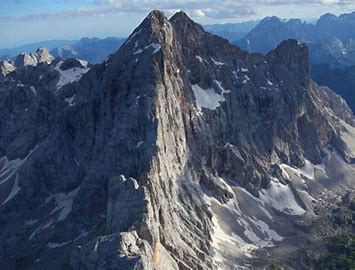I was walking with a friend of mine in the Wicklow hills a few years ago. I’m a regular hill-walker, and as a novice, my friend wanted to come out with me and gain the benefit of my mountain experience. It was a bright, clear Sunday morning, and we were walking somewhere above the Powerscourt waterfall. Part way into the walk, about noon if I remember correctly, his phone rang, and he had a brief but serious conversation. He runs a 7 day-a-week business, supplying products to the catering trade, and it was obvious to me the call was to do with work.
He finished the call, and looked at me. “Pete” he said, “there’s a problem in the office. I’ve got to go back.”
It was Sunday, and I thought the office problem would look after itself, but felt it better to show understanding, so I replied “No problem, do you know where your car is?” “No”, he replied, rather sheepishly.
I looked at him pointedly and asked him “Eh, Sean, do you know where you are?” “No, Pete” he said “I haven’t a clue where I am.”
I point this simple fact out to my business clients on a regular basis – “Have a very clear vision of where you are going, AND have a very clear understanding of where you are now.” It’s essential to clearly see the vision and goal for your company, AND to detail the issues, challenges and problems you face on a daily basis. Only then can you begin to see your vision as a goal, the route you will follow to that destination, and the simple steps you will need to take along the way.
Imagine for a moment that you are in the pub, waiting to meet me for lunch (or a pint!). Assume I’ve never been there before, so I call you to ask for directions. Your first question to me is “Where are you now?”. You can’t give me directions to the pub until you know where I am. A planned route to a goal always involves a starting point AND a destination.
Maybe it’s the same in every country, but I often feel that small Irish business owners don’t reach out for help. We start businesses with a great desire to work for ourselves, be master of our own destiny, and hopefully, along the way, make our fortune. All too often, we end up making a job for ourselves, we lose sight of the goal, and we spend our days dealing with everyday client issues and problems. It is essential that we find a new sense of direction, but it is also necessary that we get help to clarify our route, and that we get help to navigate the path to our goal. I have climbed many mountains, both here and in the Alps, some with the help of an experienced guide, and some without. There is a time and a place to face challenges on your own, and learn from that experience, but there is also a time to bring someone into your business, and allow them to provide experienced advice and guidance. That guide can bring a sense of experience, but can also bring a different perspective that allows them to see the goal with clarity, and with the benefit of their experience, help you navigate your route to that destination.
Mountaineering expeditions, like business projects, have limited resources, and it is essential that those resources are used to greatest effect. On a mountain, the available resources are food, water and time. On a business project, they are time and money. The one resource that is the most valuable, irrespective of whether it is a mountain project or a business project, is time. You can hire more staff and essentially buy more time for your team, but remember, your own time is invaluable, and cannot be replaced. The old adage says “Time is Money” – monitor yours on an on-going basis!
A number of years ago I climbed the Civetta, the second highest mountain in the Italian Dolomites. We’d chosen to climb in October, and with hindsight, that wasn’t necessarily the best choice of month given the possibility of early season snow and the shortened evenings. True to form, we met plenty of snow on the way, and I realised we were going to be pushed for time. I was constantly watching our progress, working out how far we had to go, and calculating out how much time we had left by looking at the sun. On time, on target, we arrived at the summit as the sun was setting and the temperature was dropping well below zero.
I’m always conscious of ‘best estimated’ time to the summit, and like a business project, you are never really sure if the summit you see is the real summit, or if there are hidden challenges along the way. If you are aware of your surroundings and of how far you have climbed, you get a pretty good estimate of how high you are and how far you have to climb. Time is easier to estimate – any good mountain guide will have a sense of daylight hours remaining. With good resource management, planning and skill, you and your team can be confident you will comfortably achieve your goals with resources to spare.
A business client asked me about resource management recently, and how I’d help their company oversee and manage usage of resources on a major project. I used the mountaineering analogy, and explained that we’d meet regularly, see how far we had to go, and calculate how much of our resources we had left. “Oh” she said, “Yes, I understand” I’m often asked what I feel is the most important advice for anyone with a vision of growing their business and enlarging their team. There are many nuggets of advice I could give, but for me the top three should be – Firstly, have a clear vision of where you are, where you are going, and the challenges you may face along the way; secondly, get help – You are not and cannot be an expert in everything; and thirdly, manage your time and focus wisely!



